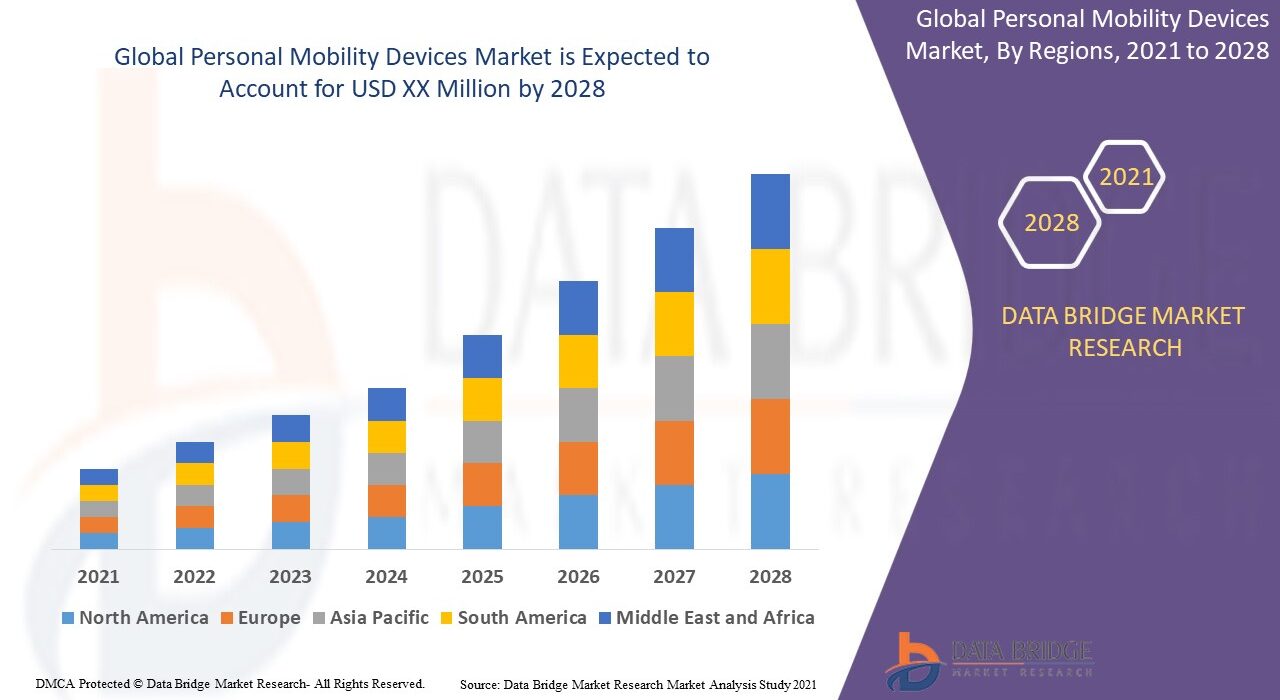Introduction
The global healthcare landscape is evolving rapidly, with an increasing focus on improving accessibility, independence, and quality of life for individuals with mobility challenges. Personal mobility devices are playing a crucial role in this transformation. These devices, which include wheelchairs, scooters, walkers, crutches, canes, and powered mobility aids, are designed to assist individuals with disabilities, injuries, or age-related mobility impairments in leading more independent lives. The growing prevalence of chronic conditions, rising geriatric population, technological advancements in mobility aids, and increasing healthcare investments are driving the demand for personal mobility devices across the globe.
The personal mobility devices market has become an essential part of the healthcare and medical device industry, as it caters to the basic yet critical need for enhanced mobility. Furthermore, the market is witnessing innovations in design, portability, and automation, making these devices more user-friendly and efficient. As demand grows worldwide, manufacturers are focusing on affordability, comfort, and advanced features to expand their customer base.
This article provides an in-depth analysis of the personal mobility devices market, covering its key drivers, challenges, segmentation, competitive landscape, technological advancements, and future outlook.
Market Overview
The personal mobility devices market is witnessing robust growth owing to the increasing incidence of mobility-related disorders and the growing aging population worldwide. With rising awareness regarding healthcare assistance products, coupled with the growing prevalence of osteoporosis, arthritis, and other chronic health conditions, there is a strong demand for mobility aids.
Healthcare organizations and governments are focusing on accessibility initiatives to ensure inclusivity for differently-abled individuals. At the same time, rapid advancements in technology have resulted in the development of lightweight, foldable, and digitally enabled devices that enhance convenience for users.
North America and Europe currently dominate the market due to strong healthcare infrastructure and higher adoption rates. However, emerging economies in Asia-Pacific and the Middle East are expected to contribute significantly in the coming years due to increased investments in healthcare facilities and a growing patient base.
Key Market Drivers
-
Rising Geriatric Population
The aging population is the most significant driver for the personal mobility devices market. Elderly individuals often experience conditions such as joint disorders, osteoporosis, and impaired motor functions, leading to increased reliance on mobility aids. -
Increasing Incidence of Disabilities and Injuries
Road accidents, workplace injuries, and congenital disabilities contribute significantly to mobility impairments. This has accelerated the need for devices such as wheelchairs, crutches, and walking aids. -
Technological Advancements in Mobility Devices
Integration of smart technologies such as GPS tracking, automated controls, ergonomic designs, and lightweight materials are making personal mobility devices more appealing and effective. -
Government and Healthcare Support
Governments and healthcare organizations are actively supporting accessibility initiatives, funding mobility aid programs, and improving healthcare infrastructure. This contributes to higher market penetration of mobility devices. -
Rising Awareness and Accessibility
With growing awareness campaigns and social acceptance of assistive devices, individuals are more open to using personal mobility devices for improving quality of life.
Market Segmentation
The personal mobility devices market can be segmented based on product type, end-user, and region.
By Product Type
-
Wheelchairs: Manual and powered wheelchairs remain the most popular devices. Powered models are increasingly adopted due to ease of use.
-
Scooters: Mobility scooters are gaining popularity among elderly users for indoor and outdoor movement.
-
Walking Aids: Includes walkers, canes, crutches, and rollators. They are widely used due to their affordability and accessibility.
-
Other Devices: Stair lifts and patient transfer devices also form part of this segment.
By End-User
-
Hospitals and Clinics: Widely used for patient mobility within healthcare facilities.
-
Home Care Settings: Growing adoption for personal use at home due to increasing home healthcare trends.
-
Rehabilitation Centers: Essential for individuals undergoing physical therapy or recovery from injuries.
By Region
-
North America: Dominates the market with advanced healthcare systems and strong adoption rates.
-
Europe: Significant adoption due to aging demographics and government support.
-
Asia-Pacific: Expected to witness the fastest growth owing to rising healthcare spending and increasing awareness.
-
Middle East and Africa: Growing adoption due to increased investments in healthcare infrastructure.
Competitive Landscape
The personal mobility devices market is competitive, with key players focusing on innovation, affordability, and expansion in emerging economies. Leading companies are investing in research and development to launch advanced products such as smart wheelchairs and foldable scooters. Partnerships with healthcare facilities and rehabilitation centers are also enhancing market presence.
Some prominent players in the market include:
-
Invacare Corporation
-
Sunrise Medical
-
Pride Mobility Products
-
Medline Industries
-
Drive DeVilbiss Healthcare
-
GF Health Products, Inc.
These companies are adopting strategies such as mergers, acquisitions, product innovation, and geographical expansion to maintain competitiveness.
Challenges in the Market
Despite steady growth, the personal mobility devices market faces several challenges:
-
High Cost of Advanced Devices
Powered and technologically advanced devices are expensive, making them inaccessible to low-income groups, especially in developing regions. -
Limited Accessibility in Rural Areas
Lack of proper distribution channels and awareness in rural and remote areas restricts the adoption of mobility devices. -
Maintenance and Durability Issues
High-maintenance costs and short device lifespans pose challenges for long-term adoption. -
Social Stigma in Developing Countries
In some cultures, mobility device users face stigma, limiting widespread acceptance.
Technological Advancements
The market is being transformed by innovations that improve user comfort and functionality:
-
Smart Wheelchairs with IoT Connectivity: Enable remote monitoring, GPS navigation, and health tracking.
-
Lightweight and Foldable Scooters: Designed for easy portability and storage.
-
Ergonomically Designed Walking Aids: Enhanced designs to reduce strain and provide better support.
-
Battery Advancements: Longer-lasting batteries for powered devices are improving reliability and efficiency.
Future Outlook
The personal mobility devices market is set for significant expansion in the coming years. Growing investments in healthcare, technological innovation, and increasing awareness about assistive products will drive adoption globally.
Emerging economies present a huge growth opportunity as they improve healthcare access and infrastructure. Companies focusing on affordable, durable, and user-friendly devices are likely to capture significant market share. Additionally, government initiatives promoting inclusivity for differently-abled individuals will further boost demand.
By 2030, the market is expected to witness greater integration of artificial intelligence, robotics, and smart features, transforming the way mobility aids are used.
Source: https://www.databridgemarketresearch.com/reports/global-personal-mobility-devices-market
Conclusion
The personal mobility devices market plays a vital role in improving the quality of life for millions of individuals worldwide. With rising demand driven by an aging population, increasing disabilities, and technological advancements, the market is positioned for strong growth. While challenges such as high costs and limited accessibility exist, continuous innovation and healthcare investments are expected to overcome these hurdles.
As personal mobility devices evolve into smarter, more affordable, and user-friendly solutions, their adoption will continue to rise across developed and developing economies. The market’s future lies in combining advanced technology with affordability to meet the diverse needs of users globally.





